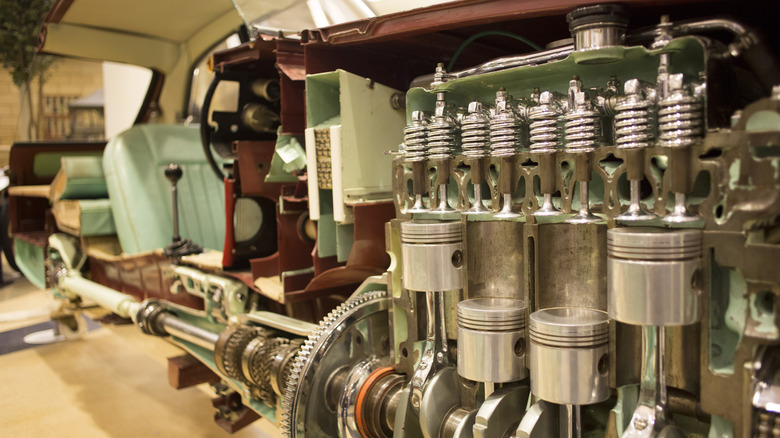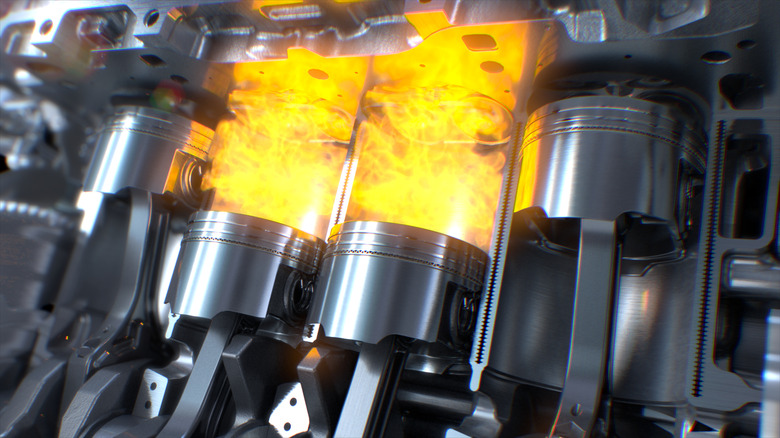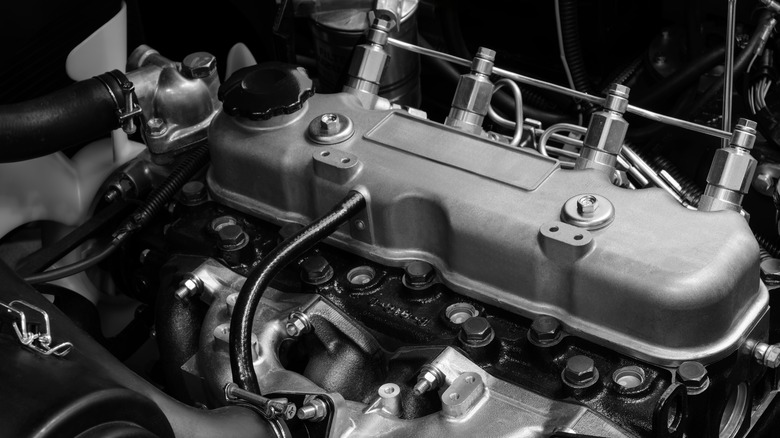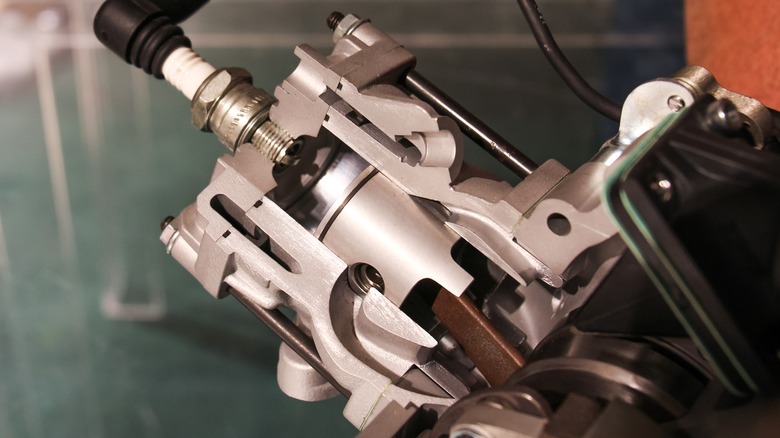What Are The Different Types Of Combustion Engines & How Do They Work?
For hundreds of years of human history, the invention that has defined our ability to travel, explore, and expand our boundaries has been the combustion engine. This hallmark of mechanical development has existed in one form or another as far back as the late 1700s with the invention of the gas turbine, but it really came into its own when the concept was patented by German inventor Nicolaus Otto in 1876 and then refined by engineers Gottlieb Daimler and Wilhelm Maybach in 1885.
Since then, the combustion engine has reliably served as the backbone of gasoline engines and modern movement in general, powering our cars, boats, aircraft, and more. While car companies are increasingly working toward hydrogen-powered engines and EVs, we should never forget the massive impact the combustion engine had on humanity's overall development. Of course, to properly appreciate the impact of the combustion engine, you need to know how it works. In actuality, modern internal combustion engines come in two distinct varieties, spark-ignition and compression-ignition. These have several small, yet distinct differences.
A combustion engine utilizes a combination of heat, pressure, and fuel to pump itself
Before we get into the variants, let's first cover how combustion engines work in general. At a glance, a combustion engine seems like a very complicated mechanical device, but if you boil it down to its basic scientific concepts, it's actually pretty straightforward.
The power generated by a combustion engine is derived from a combination of heat and pressure, generated through a series of pistons. An engine block contains several cylinders, topped off with an air-tight seal, within which are pistons. All of these pistons are connected to a crankshaft, which spins the gears in a car's powertrain and makes the wheels turn, for example.
Within each of the cylinders is a constant, compact science experiment. An intake valve pulls fuel from a connected fuel tank along with air from outside and sprays it underneath the piston, which presses down tightly to compress it. This compressed fuel and air is then heated. This combination of heat and pressure causes the mixture to ignite, creating a tiny explosion. The force from this explosion pushes the piston back up, and force from the push is transferred to the crankshaft, generating power.
Spark-ignition engines use a spark plug, while compression-ignition engines use heated air
While the overall concept of combustion engines is more or less universal, there are two distinct varieties of combustion engine, differentiated by how they generate the necessary heat for the little explosion that pushes the pistons.
The most common kind of combustion engine is a spark-ignition engine, named for the small spark plugs located within the cylinders. The intake pulls a mixture of fuel and air, then the piston pushes it down to compress it. When it's compressed, the spark plug activates, delivering a pinpoint shot of heat to the mixture. That little spark is what ignites the mixture and pushes the piston back up.
The other type of combustion engine is a compression-ignition engine. This type of engine is what's used in vehicles powered by diesel fuel, which is why it's also commonly known simply as a "diesel engine." The difference in a compression-ignition engine is the order of operations, as well as where the all-important heat comes from. Rather than creating an air-fuel mixture outside the cylinder, air is initially drawn into the cylinder on its own, where it's compressed and heated. Once the air is in a volatile state, that's when the diesel fuel is sprayed in, creating the piston-pushing explosion.
Both engine types come in four-stroke and two-stroke designs
In addition to the major types of combustion engines, the system can be differentiated further by the number strokes present in the energy generation process. A "stroke," in this context, refers to the steps in the energy generation process. Engines can come in four-stroke and two-stroke designs.
A four-stroke engine has four steps in its power generation: drawing air and/or fuel from the intake, compressing the piston, sparking it off to generate power, and venting the exhaust. These four steps in either type of engine are required to generate energy for the crankshaft. A two-stroke engine, on the other hand, is less mechanically complicated, combining elements of the four-stroke design into fewer steps. In the first stroke, the piston goes up, drawing in air and/or fuel, which is then compressed and ignited. In the second stroke, the piston pushes back down and the exhaust is vented out.
While it's possible for either engine type to be either a four-stroke or two-stroke, it's more common to see spark-ignition engines stick to the four-stroke design, while compression-ignition engines opt for the two-stroke design. Thanks to their lighter designs and faster movement, two-stroke engines are good for simple vehicles like scooters, though pollution concerns have largely made two-stroke engines a thing of the past. Four-stroke engines, meanwhile, are easier to operate at lower RPM and consume less fuel, so they're better for consumer-grade cars.



